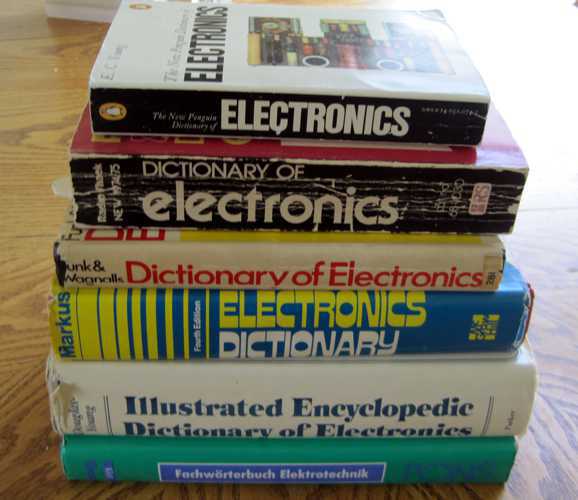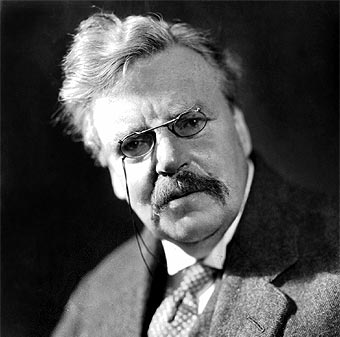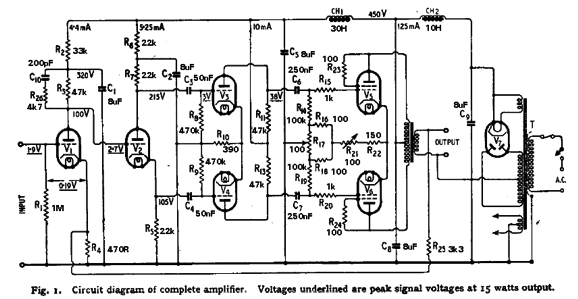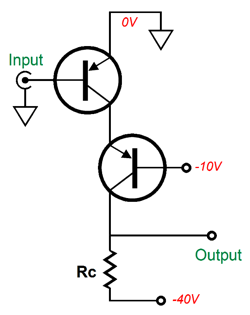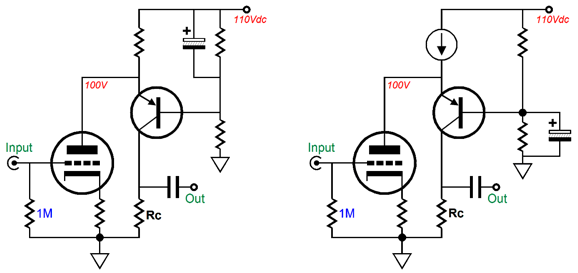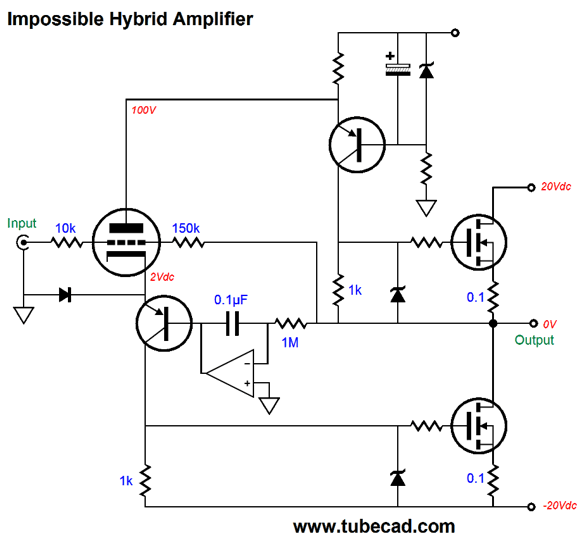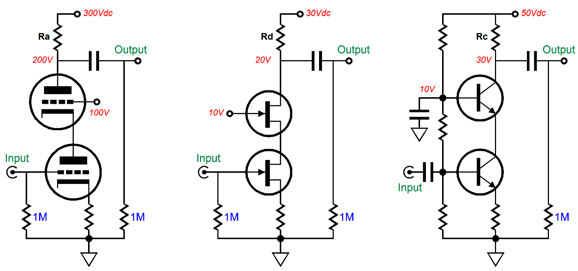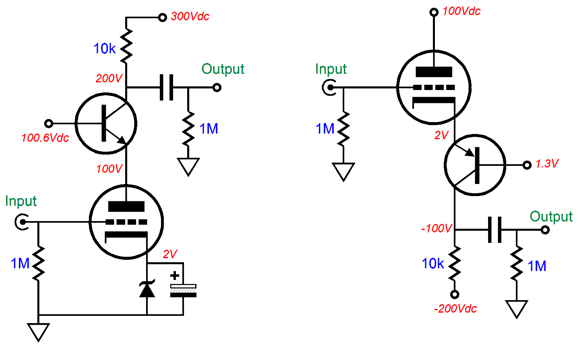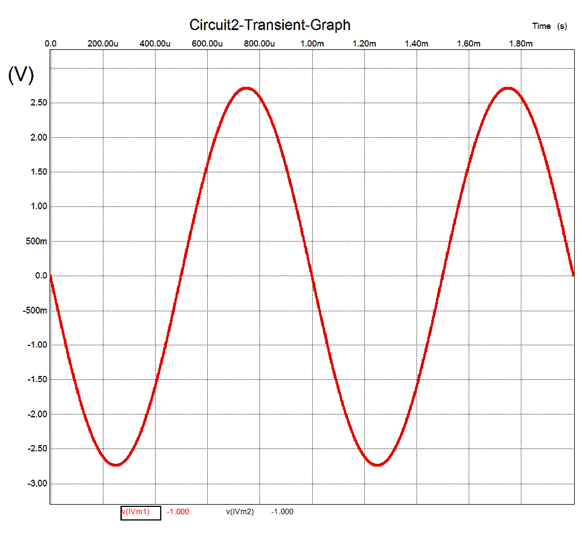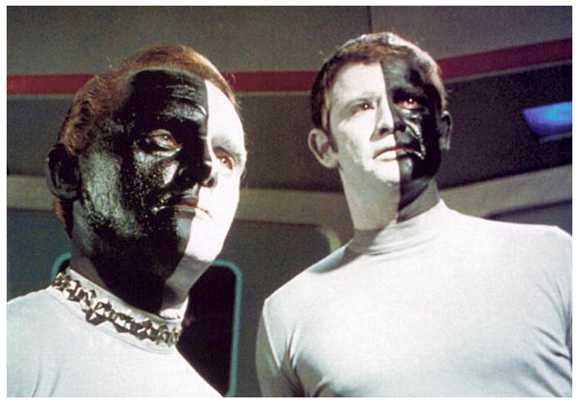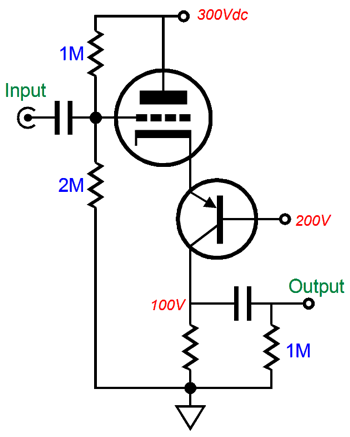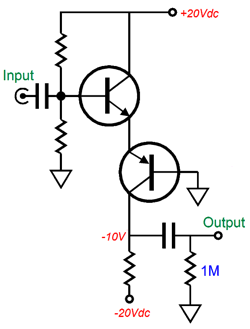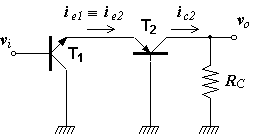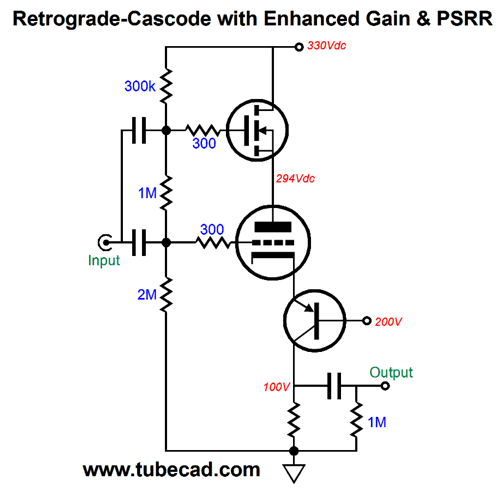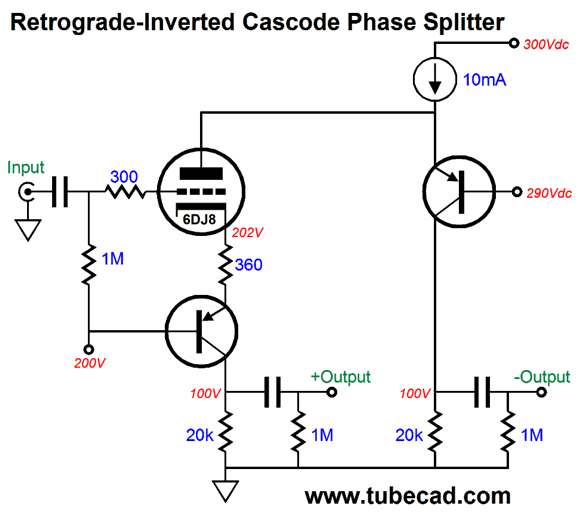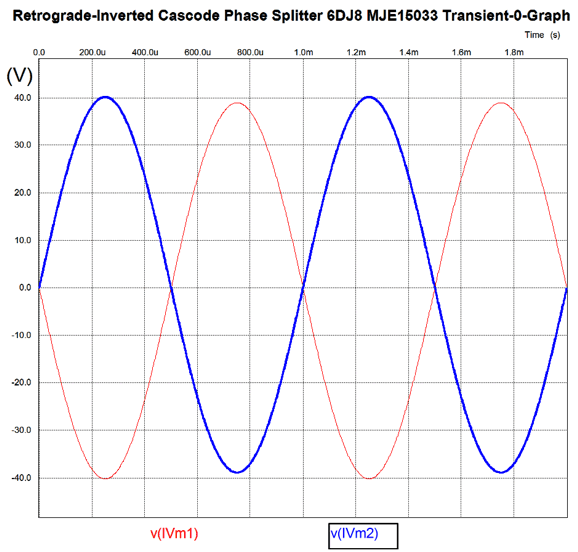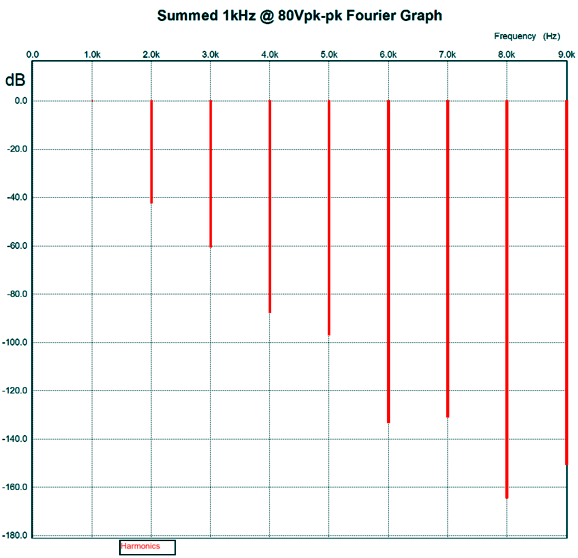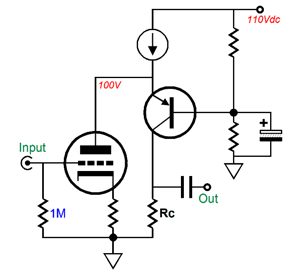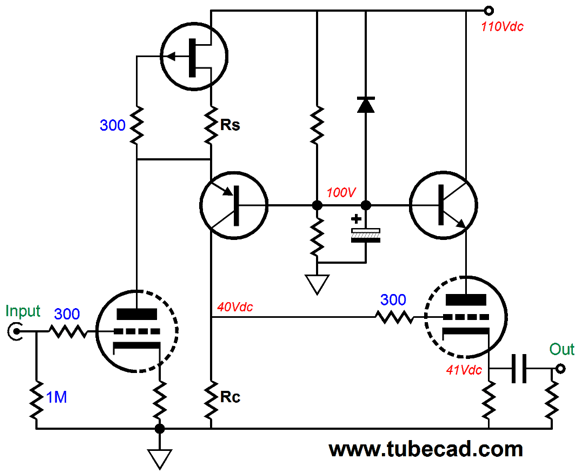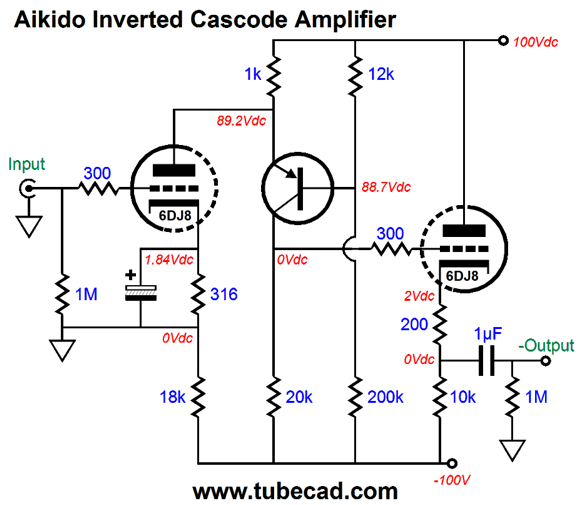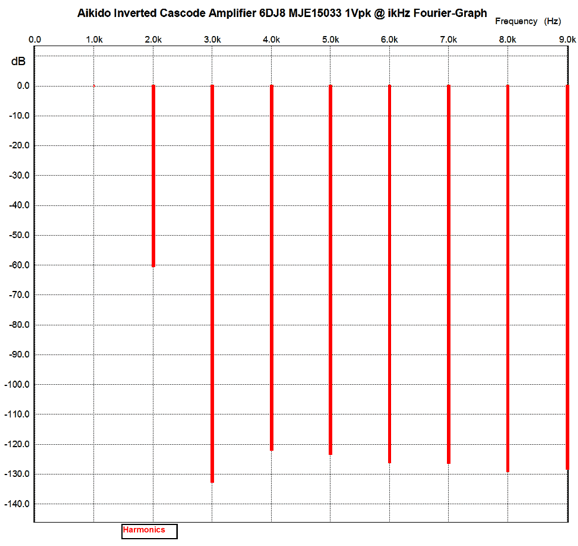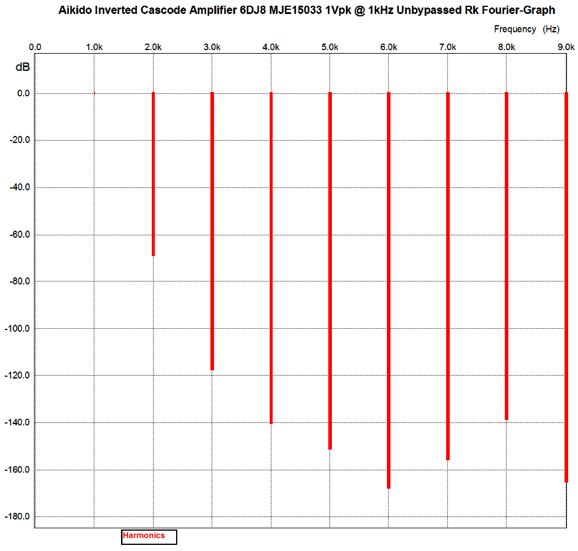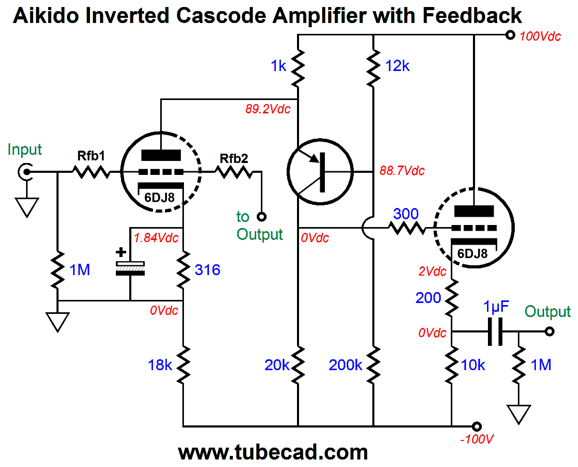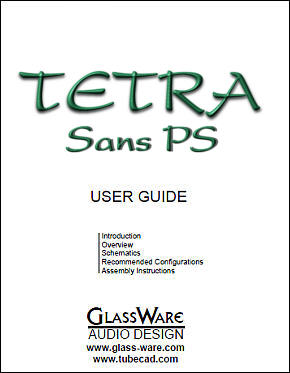| John Broskie's Guide to Tube Circuit Analysis & Design |
30 April 2016
Electronics Nomenclature Richard Mitchell, the late "Underground Grammarian," put it thus:
Those of us that practice the craft, science, and art of electronics must often make exceedingly fine distinctions. For example, a circuit designed for use with a depletion-mode MOSFET will not work with an enhancement-mode MOSFET. Vacuum tubes come in at least ten different types, from diodes to octodes to display tubes. We divide up triodes into many subgroups, such as low-mu, medium-mu, high-mu, variable-mu, high-gm, high-voltage, low-rp... with seemingly no end. In addition, FETs, MOSFETs, and transistors admit similar subdividing. Our electronic terms are both numerous and precise. Admittance, conductivity, impedance, reactance, resistance, reverse-resistance, transmittance, transistance—all relate to the facilitating or hindering the flow of energy; each has its own precise meaning. Because the electronic lexicon is so vast—and necessarily so—I own at least six electronic dictionaries.
Okay, I admit to being lexicologically AR. Just today, my wife and I argued about whether a "dish drainer" was indeed, as I claimed, intentionally isomorphic with a "dish colander."
But as a variation on the famous G. K. Chesterton epigram, "When a man stops believing in God he doesn't then believe in nothing, he believes in anything," an utterance that Chesterton never precisely made:
Apparently, not just nature, but human nature in particular abhors a vacuum. Hence, such audio terms such as "balls" and "bluish" and " blunt " and "brown" and "drive" and "dry" and "light" and "orange" (yes, orange; in fact, John Lennon asked George Martin for orange-sounding orchestration to accompany his song, Strawberry Fields) "pace" and "prat" and "uptight" and "slam" and "sweet" and "timing" and "thin" and "wispy" the list goes on and on.
Synesthesia exists. And the dictionary defines it thus:
Indeed, chromesthesia is a sub-type of synesthesia, wherein sounds provoke an experience of color. And misophonia is "a neurological disorder in which negative experiences (anger, fright, hatred, disgust) are triggered by specific sounds." Think about it: why do all movies contain a musical soundtrack? So, why not bluish or brown or orange sound? "Wait a minute," you might say, as you know precisely what the terms "brown" and "drive" and "thin" mean. I do not doubt that you do; but does anyone else share that knowledge? Really? Are you sure? I also sin this way, but at least I know that I am sinning. For example, I use audio terms such as "quaffable" and "restless," which refer not to the AC voltage leaving audio equipment but my emotional reaction to the resulting sound. In addition, a precise technical term uttered by an audiophile, such as "transconductance," may not — and usually does not — mean transconductance, the electrical characteristic relating the current through the output of a device to the voltage across the input of a device, as I have been pained to discover, as he might treat this word as being synonymous with "drive." Much the same holds true for the word "balanced." (A friend once complained to me that his recently purchased NOS and super-expensive tubes stank, as they quickly, with as little as six hours of use, lost transconductance. I took his box filled with super-expensive "bad" tubes home with me, so I could test them with my mutual-conductance (gm) meter. They all passed, which made sense as they were all NOS tubes from great European tube manufactures, such as Mullard, Philips, Seimens, and Telefunken. I returned the box, which cost him about $500 then and today would be worth closer to $2,000, with the good news that they were all "good" tubes and with the observation that whatever problem his system was suffering from "bad" tubes were not the cause. A few months later I asked him what he had done with the box of tubes. He had, of course, thrown it away; what else would you do with "bad" tubes? Since there are more than 200 classified forms of mental illness, it's a wonder that audiophilia has not been added to the list.) As a general rule, the more fluent in brand names for capacitors, resistors, and tubes an audiophile is, the less knowledgeable he is about electronic terms, such as "admittance" and "sharp-cutoff" and "variable-mu." When asked what topology his tube line-stage amplifier uses, he might reply, "It's a RCA black-plate Jupiter-wax preamp." Wow, and here I thought it might be a Tung-Sol Vitamin-Q preamp. All of this has been a prelude (an introductory performance, event, or action preceding a more important one; a preliminary or preface) to naming circuit topologies.
Topology In electronics, topology refers to a specific arrangement of electronic devices, active and passive, independent of the actual parts specified. A grounded-cathode amplifier is a grounded-cathode amplifier is a grounded-cathode amplifier— regardless of the triode used, be it a 2A3 or 12AX7; and, regardless of the B+ voltage or plate resistor value used. I often chuckle when I am told that an audiophile uses a 5687-black-plate cathode follower. Wow, and here I thought it might have been a 5687-gray-plate cathode follower, let alone an ECC99 cathode follower. Giving a topology a name, like the Naming of Cats is a difficult matter, it isn't just one of your holiday games. We often use the inventor's name, such as the White cathode follower after Mr. Eric White, the British inventor who worked for EMI, who patented his famous White cathode follower in 1940 in England (GB564250), which was also patented in the USA in 1944 (US 2,358,428). Unfortunately, a surname is not topologically informative. In addition, a surname may cause confusion, such as the Early-effect in transistors, named after the American engineer, James M. Early (1922 – 2004). One electronic newbee told me that he thought that the Early-effect referred to some quantum-mechanics anti-causality, wherein the transistor's collector reacted prior to the applied base signal, being in effect, early. Ideally, a topology's name would prove informative, revealing, and instructive. I wish that all single-device topologies held names that followed the following order: input, signal reference, and output. See tubecad.com/email_2001, which holds the following excerpt:
Once we move up and away from single-active-device topologies, however, to compound-devices topologies this naming convention would fall apart. For example, the famous Williamson amplifier topology, which he didn't actually invent, holds so many active devices that no simple name could prove instructive. In fact, it is better to subdivide this amplifier into four sub-topologies.
Well, in my last post, I wrote about the inverted cascode topology, which was a tad unfortunate as this name, the "inverted cascode," already has a topology associated with it. My thinking was that since the name "inverted cascode" had so little currency, appearing in no textbook that I know other than the wonderful electronic textbook, The Art of Electronics, by Paul Horowitz and Winfield Hill, page 914, where we see a N-channel FET and PNP transistor, that this name was rather up for grabs. That was my mistake. Let me be clear, however, as I only regret the "inverted" label, not the "cascode" label. So what does it mean for a cascode to be inverted? For a start, I would never call the following circuit an inverted cascode,
as it is just a cascode made up from two PNP transistors. The topology that does get called an "inverted cascode" are the following two variations:
The triode is not essential, as an NPN transistor is usually used. (Note where the electrolytic bypass cap falls in each version. The inverted-cascode circuit on the right enjoys something like free power-supply regulation, as the PNP transistor's emitter establishes a clean output voltage, whereas the PNP transistor in the circuit on the left relays 100% of the power-supply noise to the triode's plate.) I don't much like applying the name "inverted cascode" to this arrangement, as I prefer something like "folded cascode" or "reflexive cascode" or "twisted cascode," due to the two current paths. Nonetheless, this is what is meant by "inverted cascode," so I will have to live with it. A consistent vocabulary is worth the extra effort. Back in 1982, a friend and I signed up for a wine appreciation class. Our group of students was small, as the bad weather had scared away about half of the class; and we brave hearts considered ourselves to be already extremely knowledgeable about wine, happy that the bad weather culled the weaker wine drinkers from our group, as it left more expensive wine for us to drink; as the tuition fee was non-refundable, our instructor bought more-expensive wine for the smaller number of students. Our instructor worked at a famous Napa Valley winery and he thoroughly knew wine, bringing excellent examples. He took great care to maintain a consistent vocabulary for describing wine, something woefully missing from audio practice. He broke out a case filled with small bottles, each of which held a wine-related scent. He passed around an unmarked bottle and asked each of us to describe the scent. "Raisins," said some; others said, "prunes." Our instructor explained that he didn't care what we might think or smell—from that point on—that scent was called raisin; period. By the way, back in the year 1988, I built the following amp:
At its unveiling, I showed some of my electronic buddies its schematic. There was a universal agreement that it couldn't work, in spite of it happily playing away. Much like the story about physicists claiming that bees could not fly, in spite of having seen thousands fly, my friends were convinced that the amplifier could not work—save for my friend Vance. He looked up from the schematic and mumbled, "Genius, pure genius." Everyone looked at him and he went on to say, "Cascoded at both the cathode and the plate." Slowly, light-bulbs lit, one after the other, as my buddies grokked the circuit. (The amplifier put out 16W at less than 1% THD. Its flaw was that until the triode heated up, the output MOSFETs got far too hot, crazy hot, as they drew very heavy current without the triode up and running. The workaround is to forgo the DC coupling and use two coupling capacitors, which not only makes a safer amplifier, but a lower distortion amplifier, as we can use larger-valued load resistors in place of the two 1k resistors, which increases the open-loop gain; the DC servo would then adjust the bias voltage on the top MOSFET, so no DC offset would result.) A cascode circuit is, as Wikipedia informs us, "a two-stage amplifier composed of a transconductance amplifier followed by a current buffer." What is a transconductance amplifier? It is an amplifier that accepts an input voltage and delivers a related output current. A single FET or MOSFET or pentode or transistor or triode can be the basis of a transconductance amplifier. A transconductance OpAmp is a special design that offers two differential inputs and yields a current output. Its symbol is interesting.
For me, the extra defining characteristics of a plain cascode circuit are the single current path that runs through both active devices and the fixed voltage across the input device and the elimination of Miller-effect capacitance.
What follows are two circuits that exhibit the same gain, bandwidth, PSRR, Zo, and distortion, but which give rise to disagreement on suitability of applying the "cascode" label on both.
I ran some SPICE simulations on both circuits and the two plot lines overlap so tightly that the green trace (for the circuit on the right) can barely be seen. (It's there, under the red trace.) The triode was a 6DJ8 and the NPN transistor a MJE15032; the PNP, a MJE15033.
My view is that we have a distinction without much of a difference here. They do differ, however, in phase, which is quite useful. (By the way, I had to run some SPICE simulations on the MJE15033 model to find out what the devices effective emitter resistance was at 10mA, about 5 ohms, which I then added as an implicit cathode resistor in the cascode on the left, but I failed to add 5 ohms as an implicit plate resistor in the cascode on the right.) Both circuits use a triode as a transconductance amplifier and a transistor as a buffer, which tightly locks the triode in a fixed voltage potential. Both circuits yield the same formula for gain, roughly, Gain = gm · Rload, where gm refers to the triode's transconductance. In America, we have a saying,
The Brit writer, Douglass Adams, came up with his own version,
My variation would go as follows: If a two-active device circuit offers the same gain, output impedance, bandwidth, PSRR, and distortion as plain cascode and one device functions as a transconductance amplifier, while the second functions as a buffer, we have a cascode. Not everyone agrees. I am reminded of the Star Trek episode where they encounter the planet at civil war, with the half-black men fighting the half white men.
The men at war thought the difference essential and decisive, but Kirk found the distinction risible. If I thought that I could get it to stick, I would label this circuit
the "vertical grid-base-collector-cascode amplifier," but I know that it wouldn't stick. By the way, what do solid-state folk call the following circuit?
It's known as the "CE-CB complementary cascode." In textbooks it will be drawn like this. See section 4.2. CE-CB Cascode pair.
CE stands for common-emitter and CB stands for common-base. "Complementary" means used of two things when each adds something to the other or helps to make the other better; in electronics, we often speak about complementary pairs of transistors, which share the same voltage limits and power handling and beta and Ft, but differ in NPN and PNP classification; for example, the 2N4401 and 2N4403. Unfortunately, triodes only come in N-type, with the grid controlling the current flowing up from the cathode through the plate and no P-type possible. So, what can we call this circuit?
The triode and PNP transistor do not form a complementary pair, no matter how loose our standards. Well, what sort of name should we give this topology? A "Bastode-cascode" internally rhymes too much for my taste. The label I quite like is "retrograde," as it contains the word "retro" and it sounds like the word "renegade," which the American Heritage Dictionary defines as 1. One who rejects a religion, a cause, an allegiance, or a group for another; a deserter. 2. An outlaw; a rebel. Surely, anyone devoted to vacuum tubes in the Age of Silicon is something of a deserter and rebel. "Retrograde" is defined in that same dictionary as: "adj. 1. Moving or tending backward. 2. Opposite to the usual order; inverted or reversed." While both meanings apply to this circuit, the second is the more important. Retrograde Hybrid Cascode has a nice ring to it. One reader claimed that the above circuit was not a cascode and that the triode functioned as a cathode follower, as its plate was the signal reference; i.e. its plate was AC grounded. (By the way, cathode followers have been called grounded-plate amplifiers.) Well, what happens when we no longer "ground" the plate?
This circuit realizes a tad bit more transconductance from the triode: (mu + 1) / rp versus the usual mu/rp. Effectively we have two inputs, the grid and the plate. Such a configuration cannot be a cathode follower, as the plate is not grounded. The triode functions as a transconductance amplifier. By adding a cathode resistor, we can both linearizes and reduce the conversion of input voltage to output current. The name "cathode follower" or grounded-cathode amplifier" do not apply; the name "cascode," however, does. The enhanced PSSR results from shielding the triode's plate from the power-supply noise via the N-channel MOSFET. In addition, this circuit offers less input capacitance, as the the plate sees the same AC signal that the grid does, so the capacitance between the two nulls. The triode functions as a transconductance amplifier; the PNP transistor, a buffer. A cascode, in a nutshell.
Well, here is my reasoning: once we have given a circuit arrangement a name, we can treat that arrangement as a building block. Given enough varied blocks, we can design some new and "awesome" circuits. The following uses the retrograde and inverted cascode building blocks with a single triode.
This circuit develops a gain (40) in excess of the 6DJ8's amplification factor (33), a sure tip off that some form of cascoding is employed, and two anti-phase outputs. Moreover, if offers excellent PSRR. Hence, it sidesteps the "pedantic" and "prissy" labels, its being awesome and all.
The two outputs are truly balanced, in spite of how asymmetrical the two plot lines appear. Although both outputs yeild the same gain, the single triode gives rise to 2nd harmonic distortion, which is reflected in the two outputs. When summed in the output stage of a power amplifier, the result is a very single-ended harmonic structure, as the even-order harmonics are not nulled.
The circuit's THD at 80Vpk-pk at 1kHz comes in at close to 1%. Of course, inside a power amplifier that employed an input stage and output stage and a negative feedback loop, the distortion would differ, probably being much lower.
Aikido Inverted Cascode Amplifier
The triode's plate sees a fixed, noise-free voltage and the load resistor, Rc, terminates into ground, which is the very reference of quiet. The only hassle is that we must create a constant-current source and add a few safety features and the means of lower the output impedance, which as it stands in the circuit above is equal the value of resistor Rc.
Resistor Rs will set the FET's idle current and it will have to be hand selected. The Added cathode follower offers a low output impedance, but it could also allow too much power-supply noise to leak out. Adding the NPN transistor eliminates this possibility. On the other, given a bipolar power supply, we can achieve the same results with fewer parts and less tweaking, as the schematic below shows.
Here a +/-100V bipolar power supply is assumed to contain equally noisy rails, which differ in phase. Normally, this is a safe assumption, but if one rail is burdened by a heavier load than the other, that condition may no longer obtain. This explains the odd inclusion of the 18k resistor, which would other seemingly do nothing. Ah, here something like art enters dry electronics. The input tube is a 6DJ8 that functions as a transconductance amplifier. the PNP transistor, say a MJE350 or MJE15033, functions as an emitter follower (a buffer). The second 6DJ8 functions in a cathode follower circuit. If the input sees a positive input signal, its conduction increases, which in turn robs the PNP transistor of current. Bear in mind that the 1k emitter resistor that connects to the B+ always sees a fixed DC voltage, which implies a fixed current flow; thus, if the triode hogs the current, the transistor must lose current flow. (If it helps, imagine that the 1k resistor was replaced by a constant-current source.) In contrast, if the input triode sees a negative input signal, it conducts less, so the transistor must conduct more current. The 20k load resistor sees the varying current flow and develops a varying voltage drop as a result. The "Aikido" label comes from the sneaky way that a large portion of the power-supply noise riding on the positive rail is injected into the PNP transistor's base, but not 100% of the noise, which injects an anti-phase power-supply noise signal into the output that nulls with the negative rail noise. Mind you, different triodes and different load resistances will require some tweaking to establish the noise null. How well does this circuit perform in SPICE? The gain with a bypassed cathode resistor on the input tube results in a gain of 158 (+44dB). Unbypassed, the gain is a little over 40. Here is the SPICE Fourier graph for the bypassed version.
Mercy, mercy, mercy. THD is 0.1% and the evil 3rd harmonic is tamed. With the input triode's cathode resistor unbypassed, the distortion drops.
But then too does the gain. In both versions the output impedance is about 300 ohms. The PSRR is better than -40dB. An inverting-amplifier negative feedback loop could be added thus:
If we needed +12dB of gain (x4 in other words), we would set Rfb1's value to 10k and Rfb2's value to 43k. The punch-line here is that by labeling the inverted and retrograde cascode topologies, my mind could treat the two as building blocks, which then allowed me to create these new circuits. Given enough time and beer, ten more circuits could be devised based on or utilizing these two building blocks.
*More from Richard Mitchell's book, Less Than Words Can Say
Next Time
User Guides for GlassWare Software Since I am still getting e-mail asking how to buy these GlassWare software programs:
For those of you who still have old computers running Windows XP (32-bit) or any other Windows 32-bit OS, I have setup the download availability of my old old standards: Tube CAD, SE Amp CAD, and Audio Gadgets. The downloads are at the GlassWare-Yahoo store and the price is only $9.95 for each program. http://glass-ware.stores.yahoo.net/adsoffromgla.html So many have asked that I had to do it. WARNING: THESE THREE PROGRAMS WILL NOT RUN UNDER VISTA 64-Bit or WINDOWS 7 & 8 or any other 64-bit OS. One day, I do plan on remaking all of these programs into 64-bit versions, but it will be a huge ordeal, as programming requires vast chunks of noise-free time, something very rare with children running about. Ideally, I would love to come out with versions that run on iPads and Android-OS tablets.
//JRB |
Kit User Guide PDFs
And
High-quality, double-sided, extra thick, 2-oz traces, plated-through holes, dual sets of resistor pads and pads for two coupling capacitors. Stereo and mono, octal and 9-pin printed circuit boards available.
Designed by John Broskie & Made in USA Aikido PCBs for as little as $24 http://glass-ware.stores.yahoo.net/
The Tube CAD Journal's first companion program, TCJ Filter Design lets you design a filter or crossover (passive, OpAmp or tube) without having to check out thick textbooks from the library and without having to breakout the scientific calculator. This program's goal is to provide a quick and easy display not only of the frequency response, but also of the resistor and capacitor values for a passive and active filters and crossovers. TCJ Filter Design is easy to use, but not lightweight, holding over 60 different filter topologies and up to four filter alignments: While the program's main concern is active filters, solid-state and tube, it also does passive filters. In fact, it can be used to calculate passive crossovers for use with speakers by entering 8 ohms as the terminating resistance. Click on the image below to see the full screen capture. Tube crossovers are a major part of this program; both buffered and un-buffered tube based filters along with mono-polar and bipolar power supply topologies are covered. Available on a CD-ROM and a downloadable version (4 Megabytes). |
||
| www.tubecad.com Copyright © 1999-2016 GlassWare All Rights Reserved |

